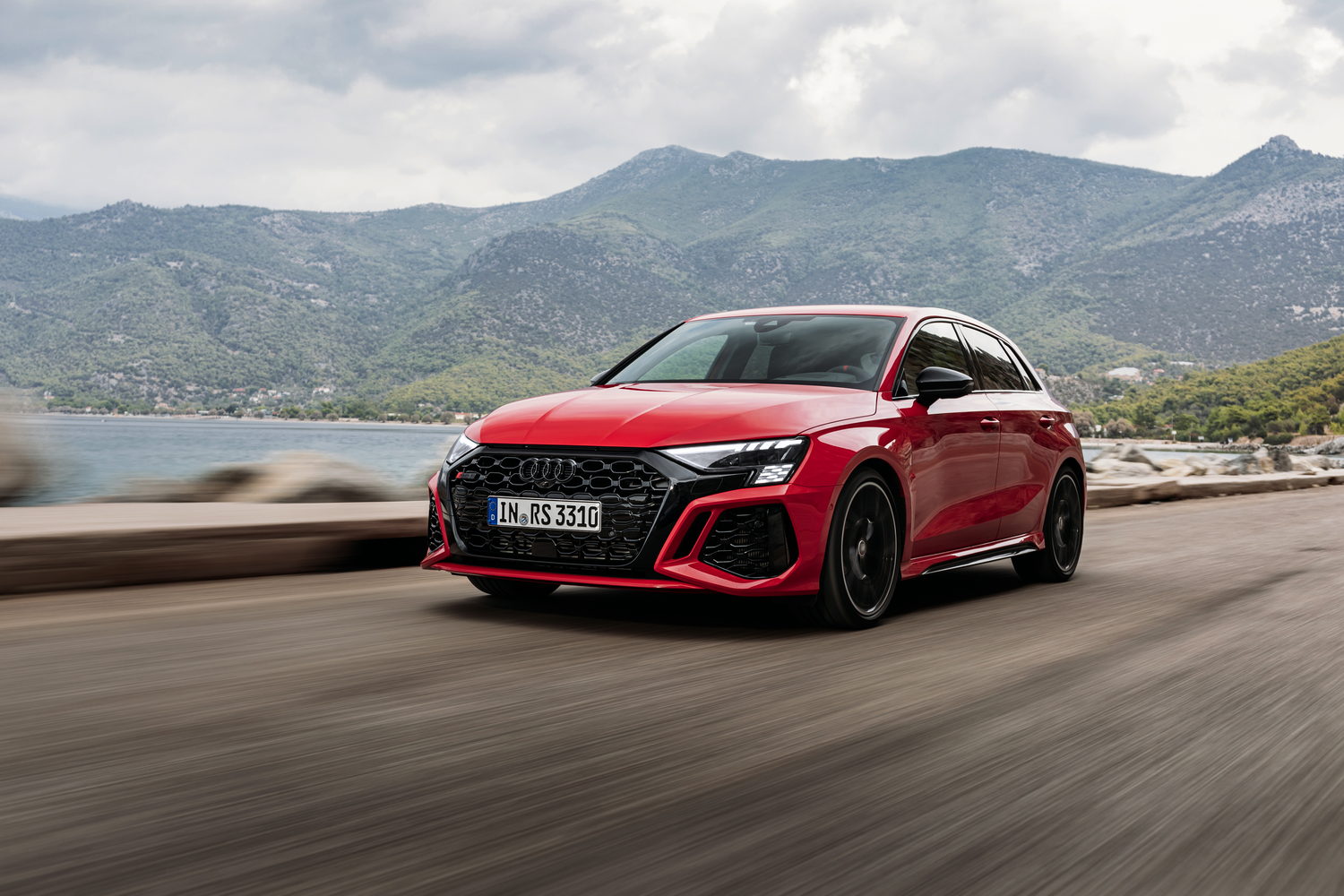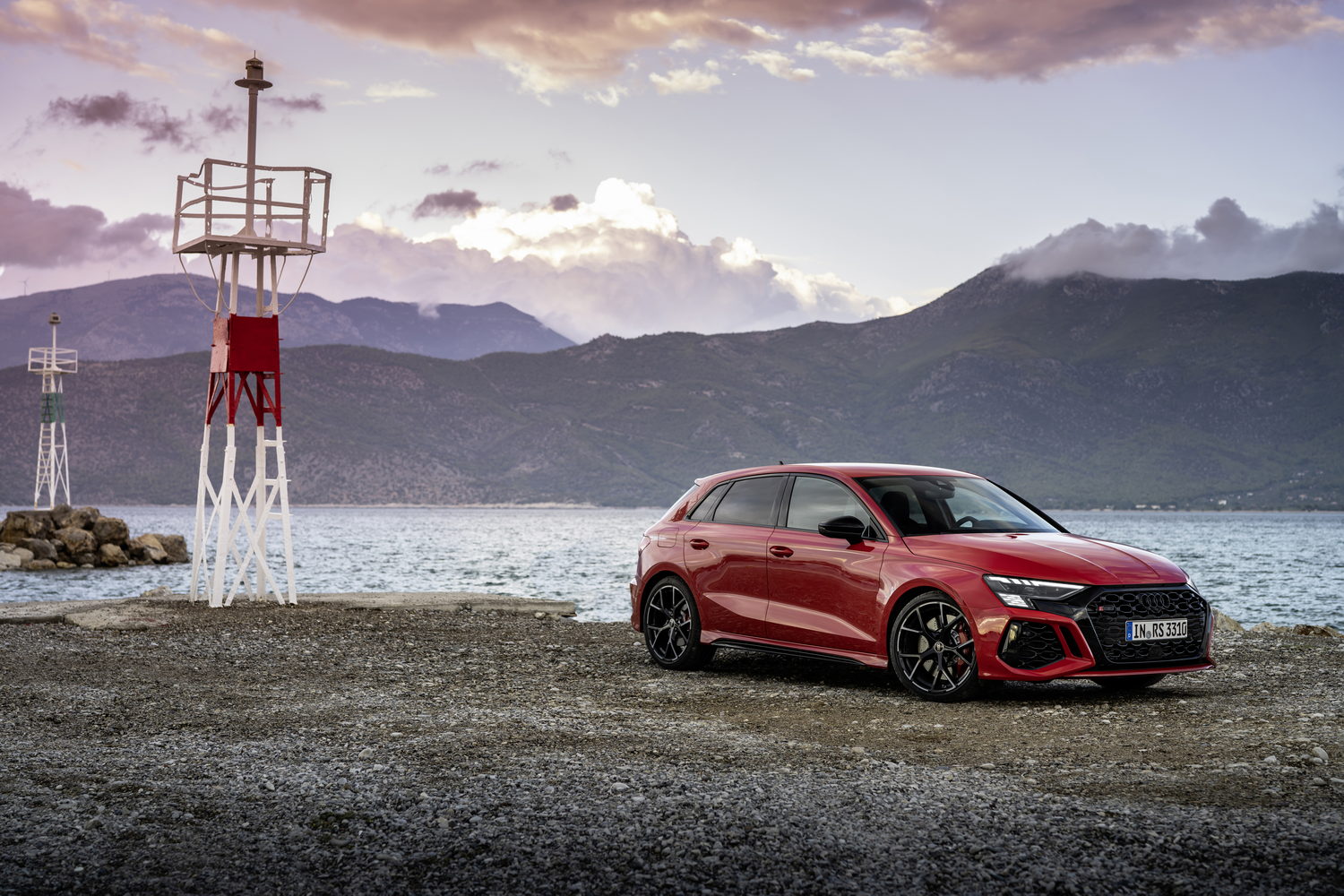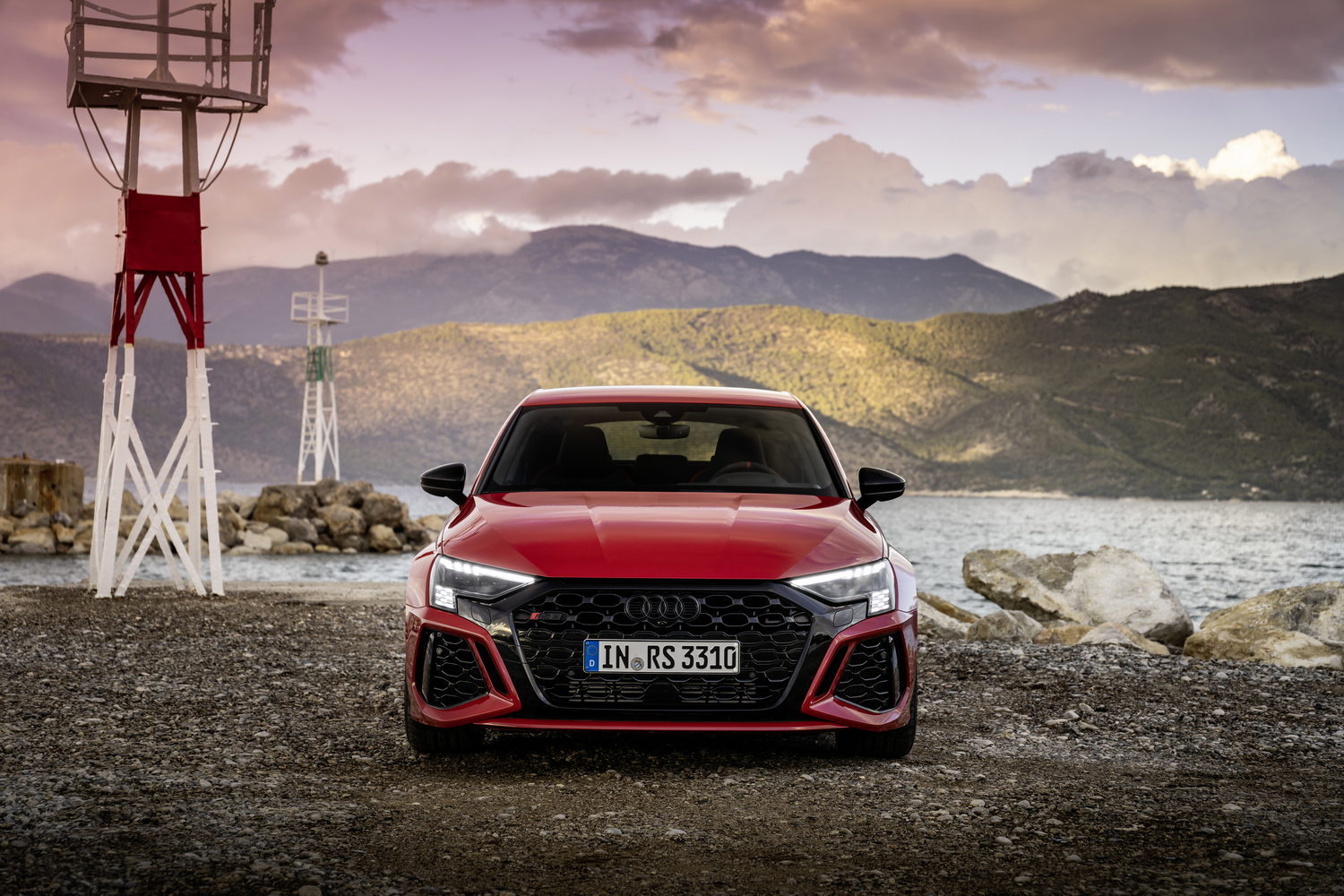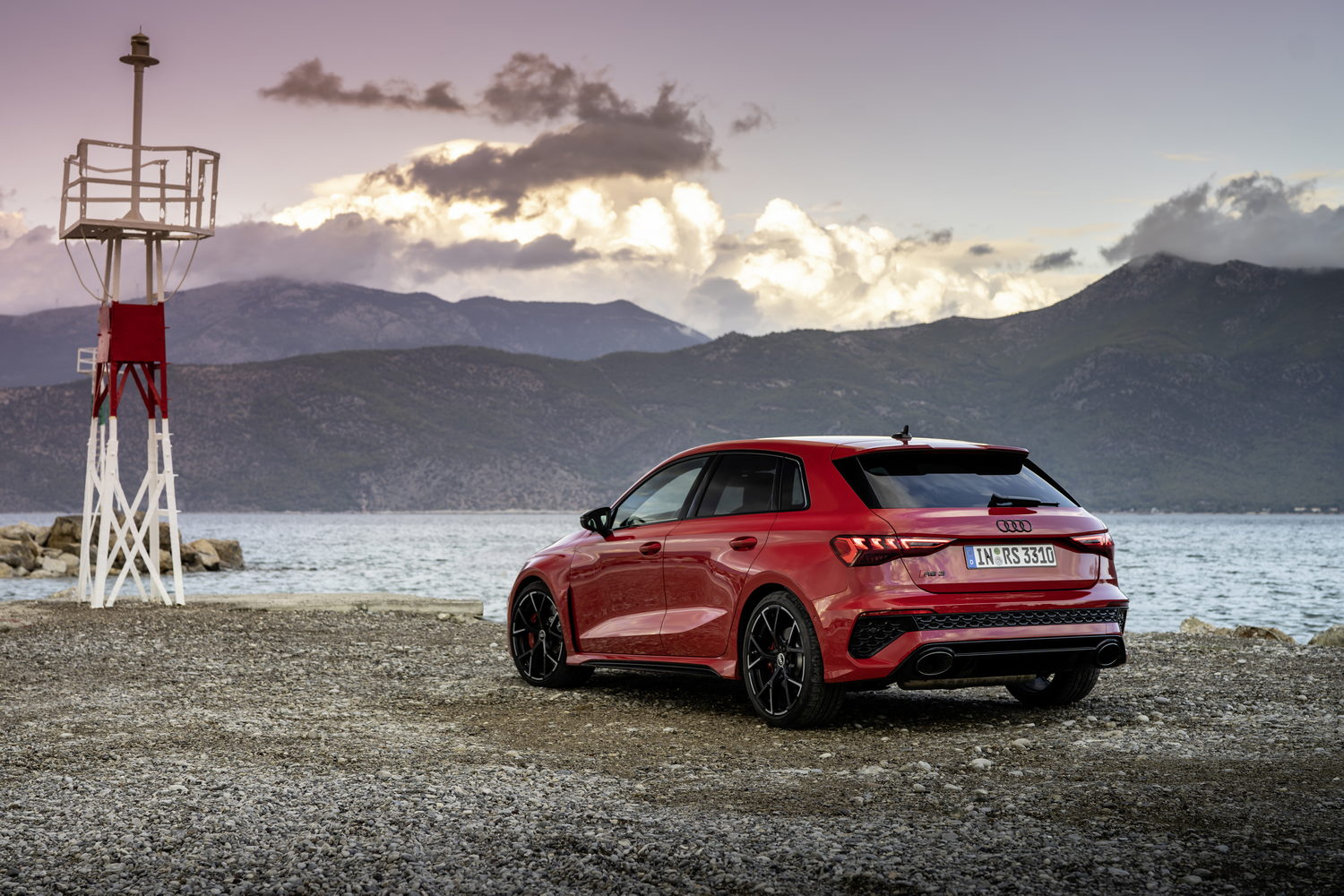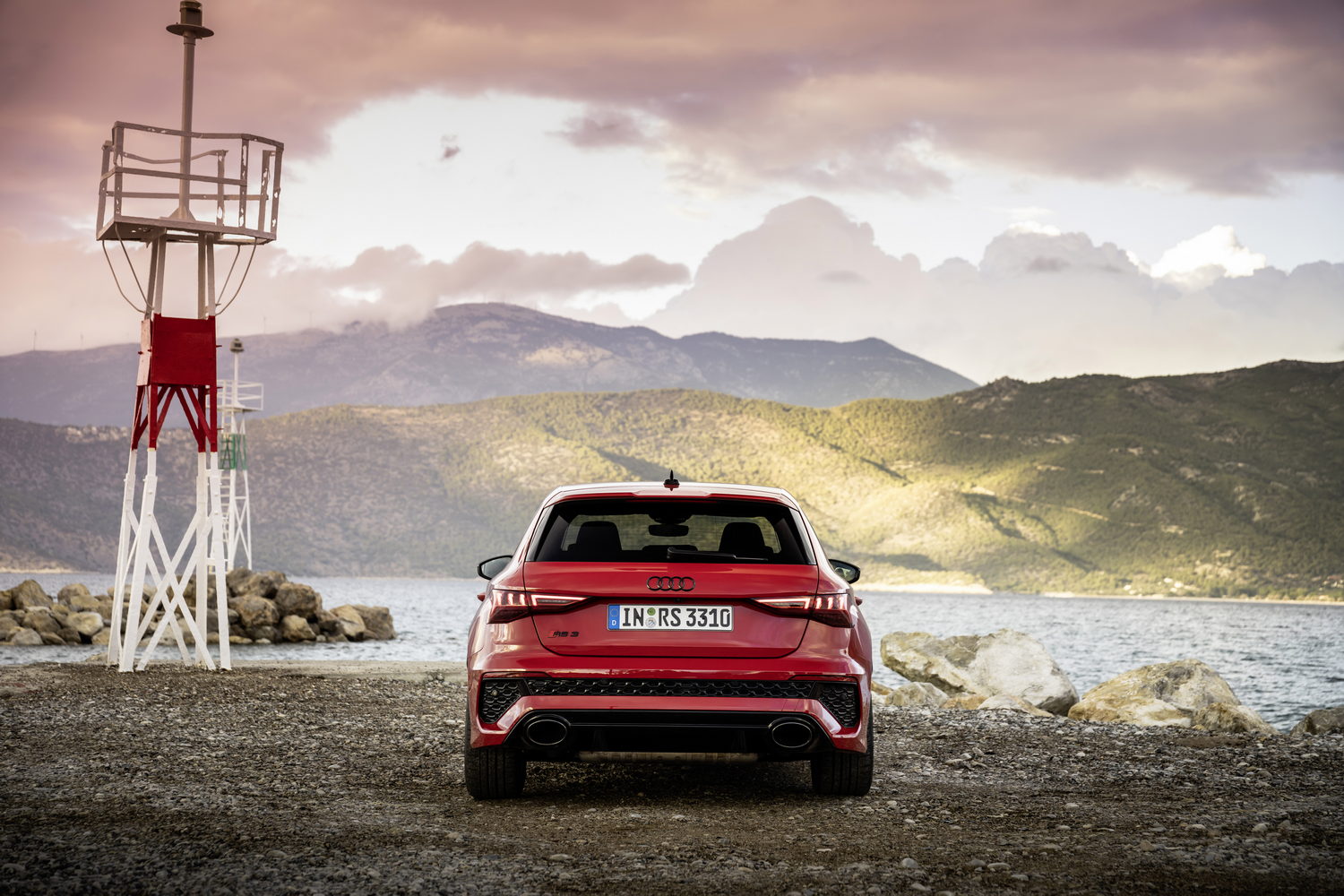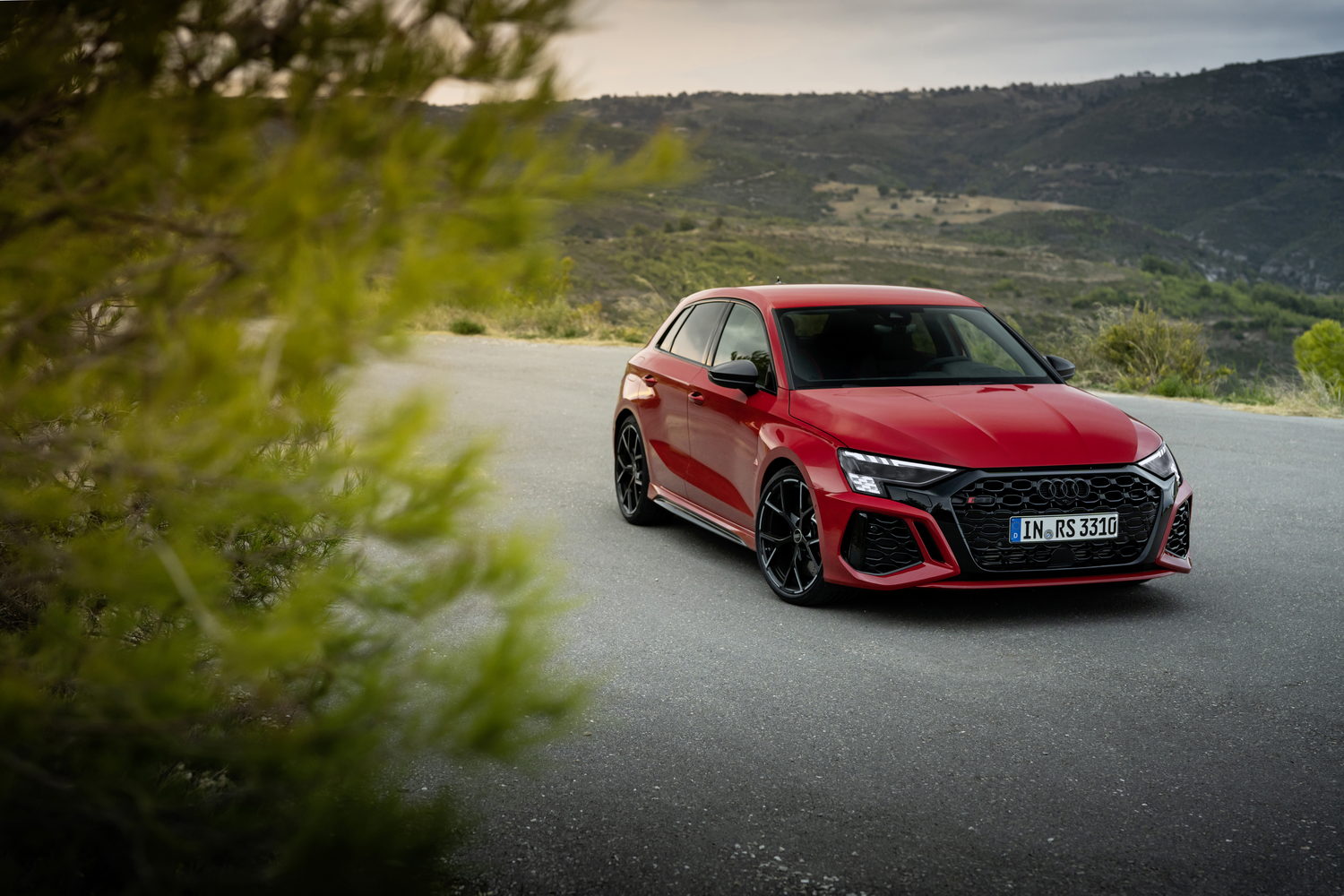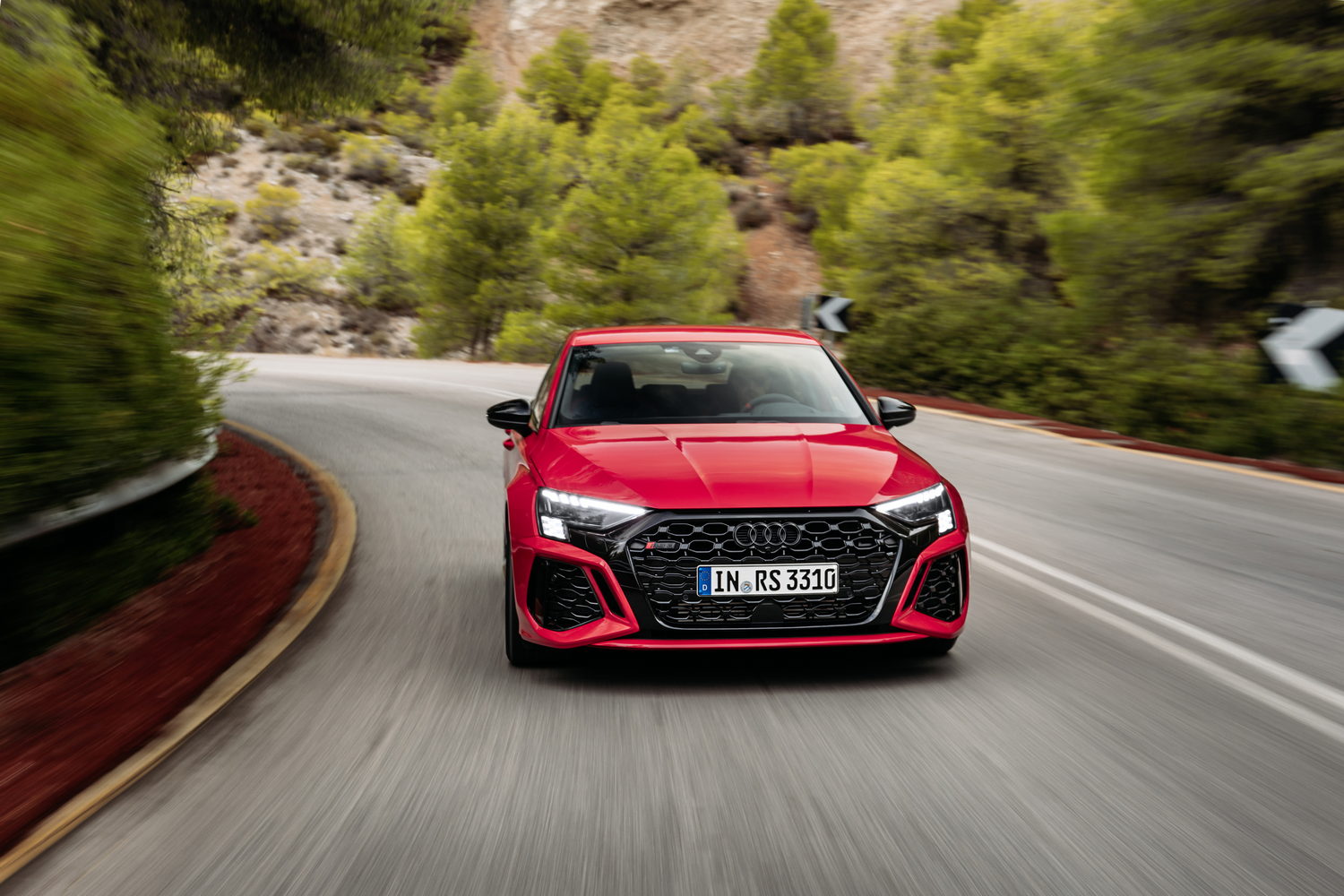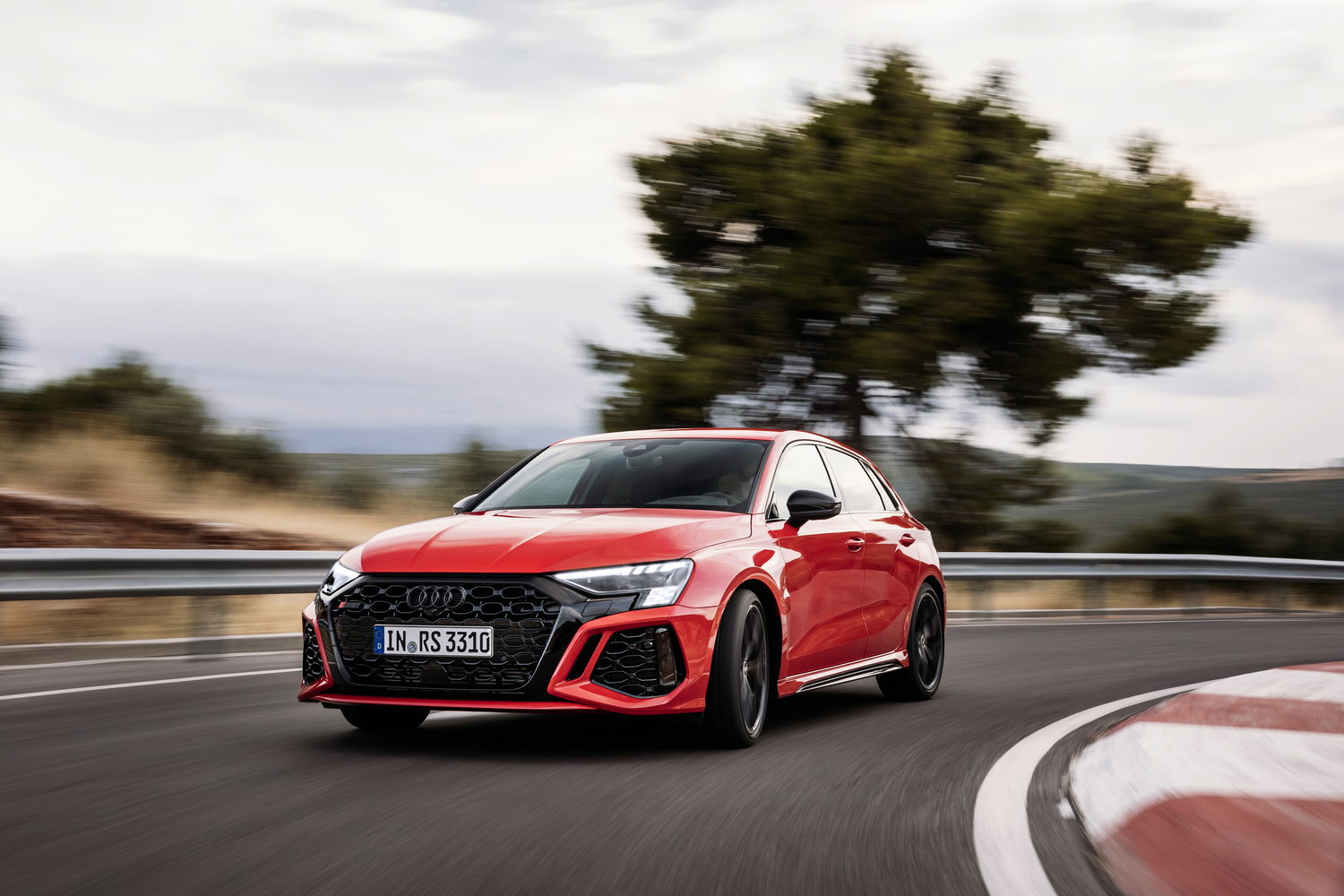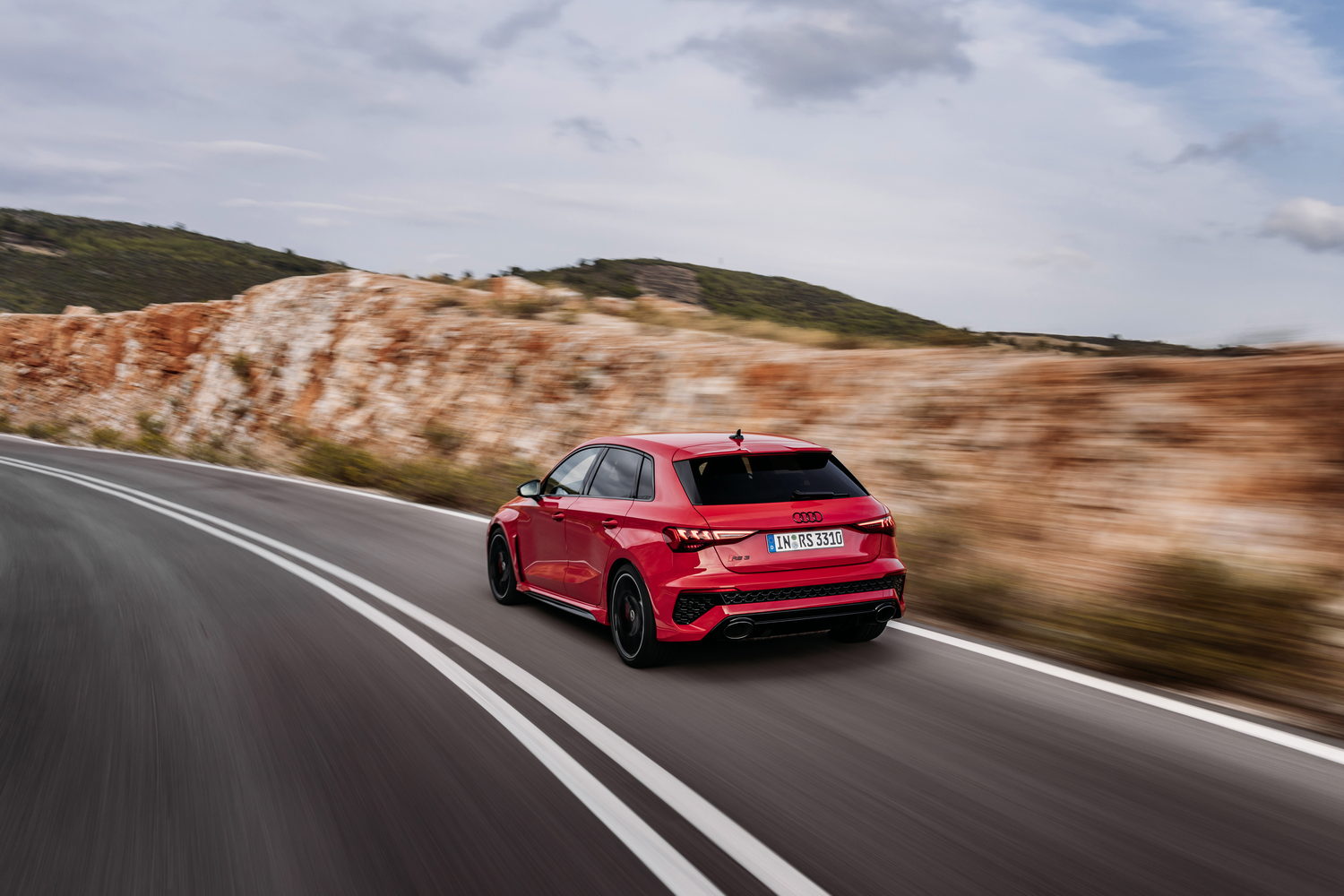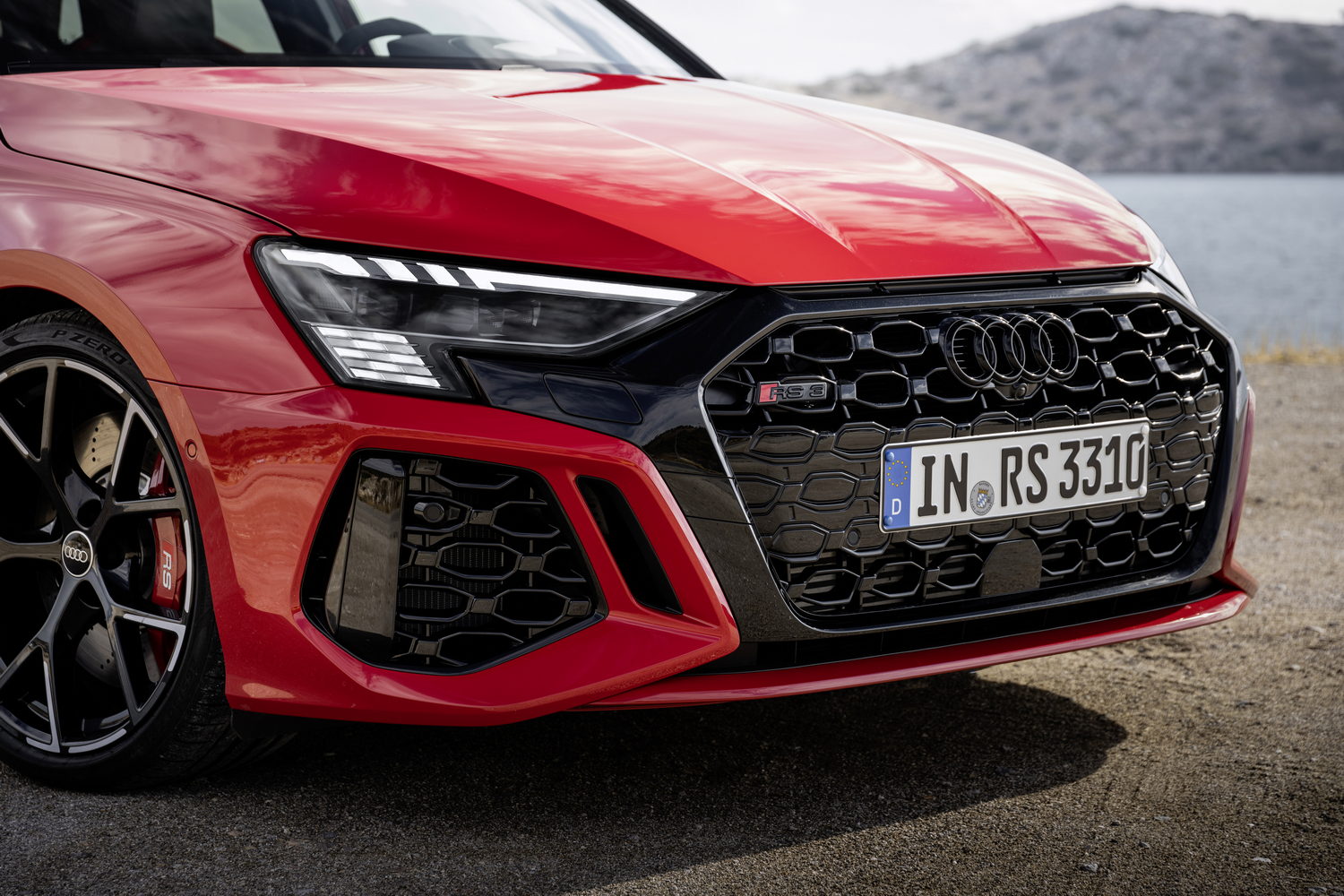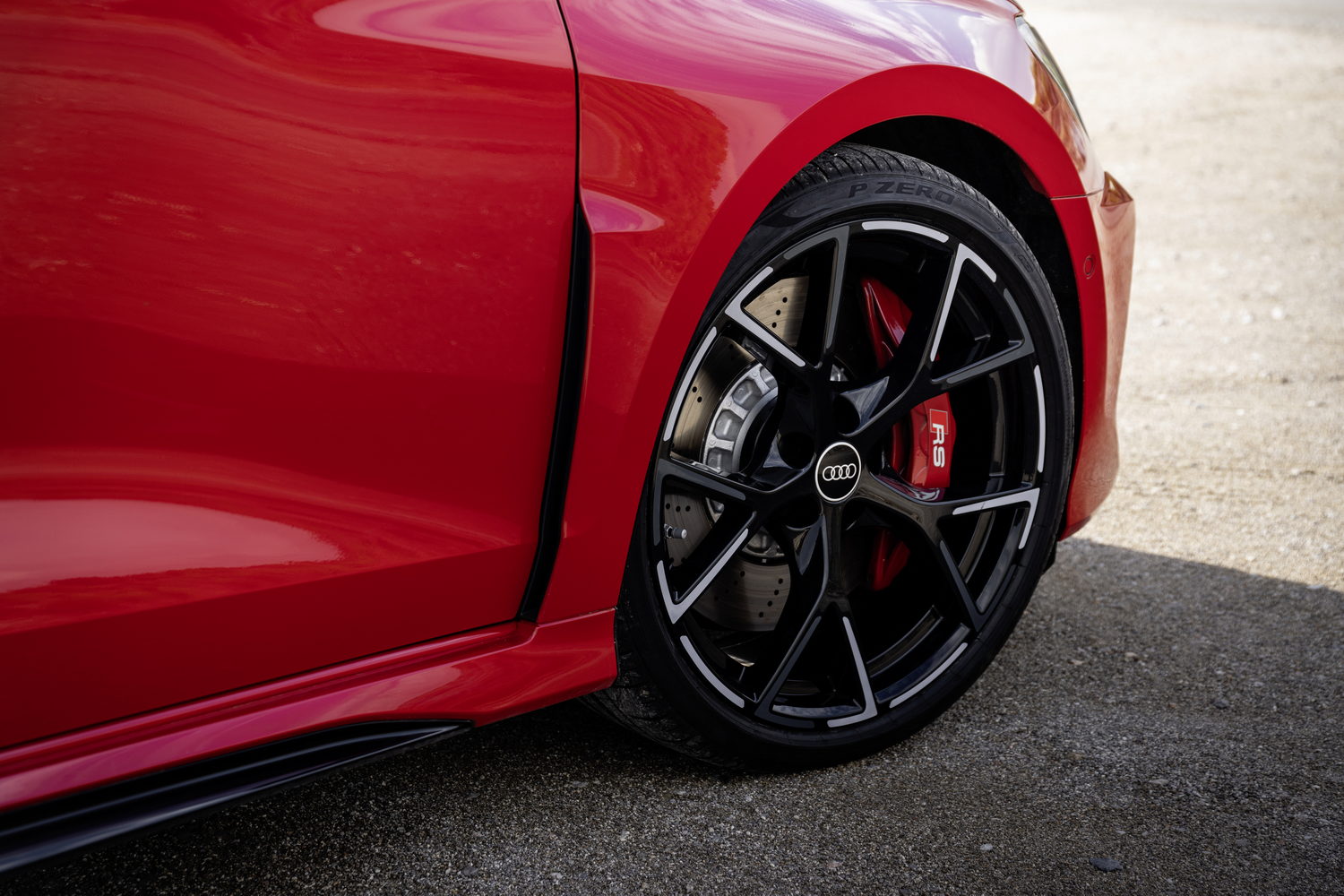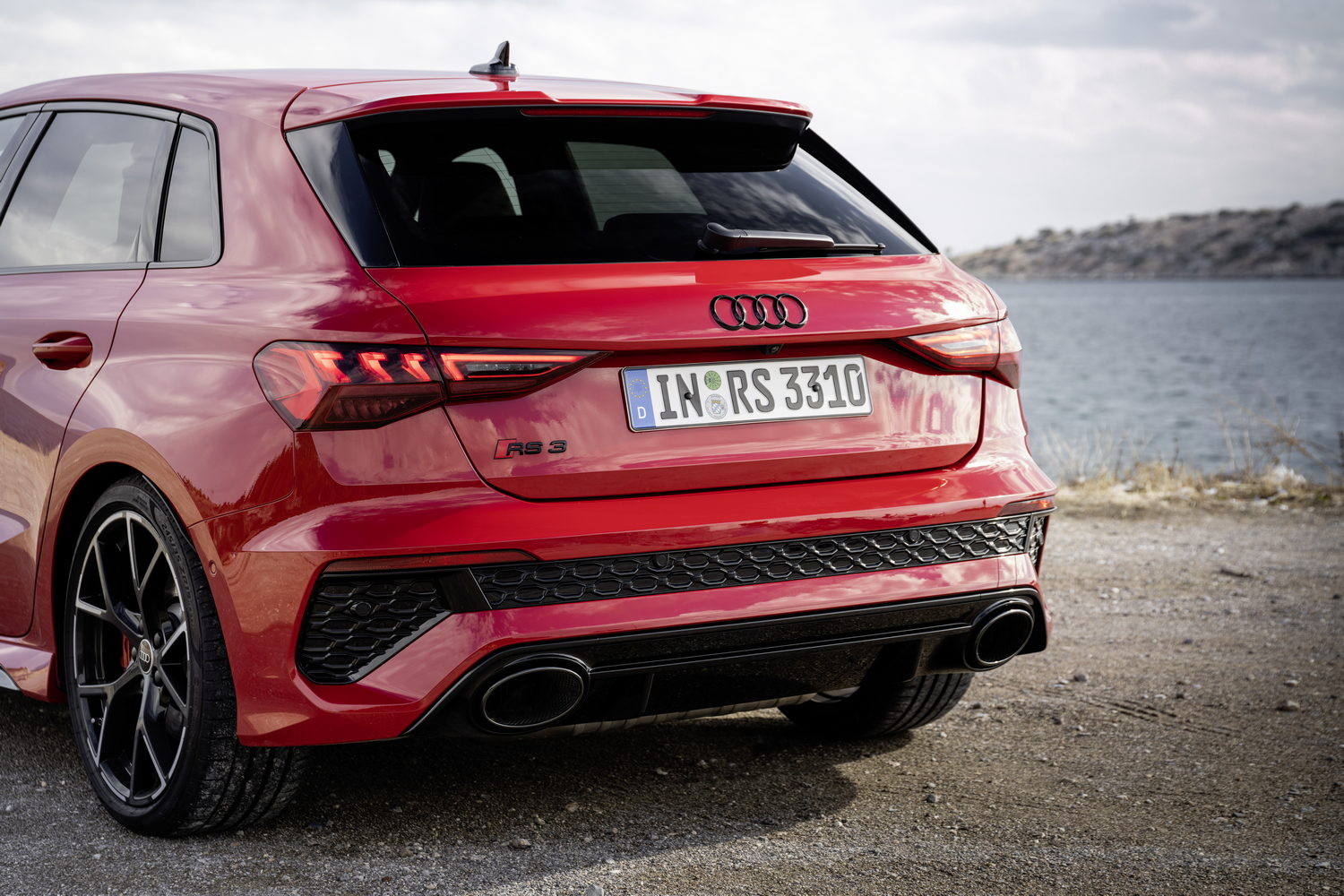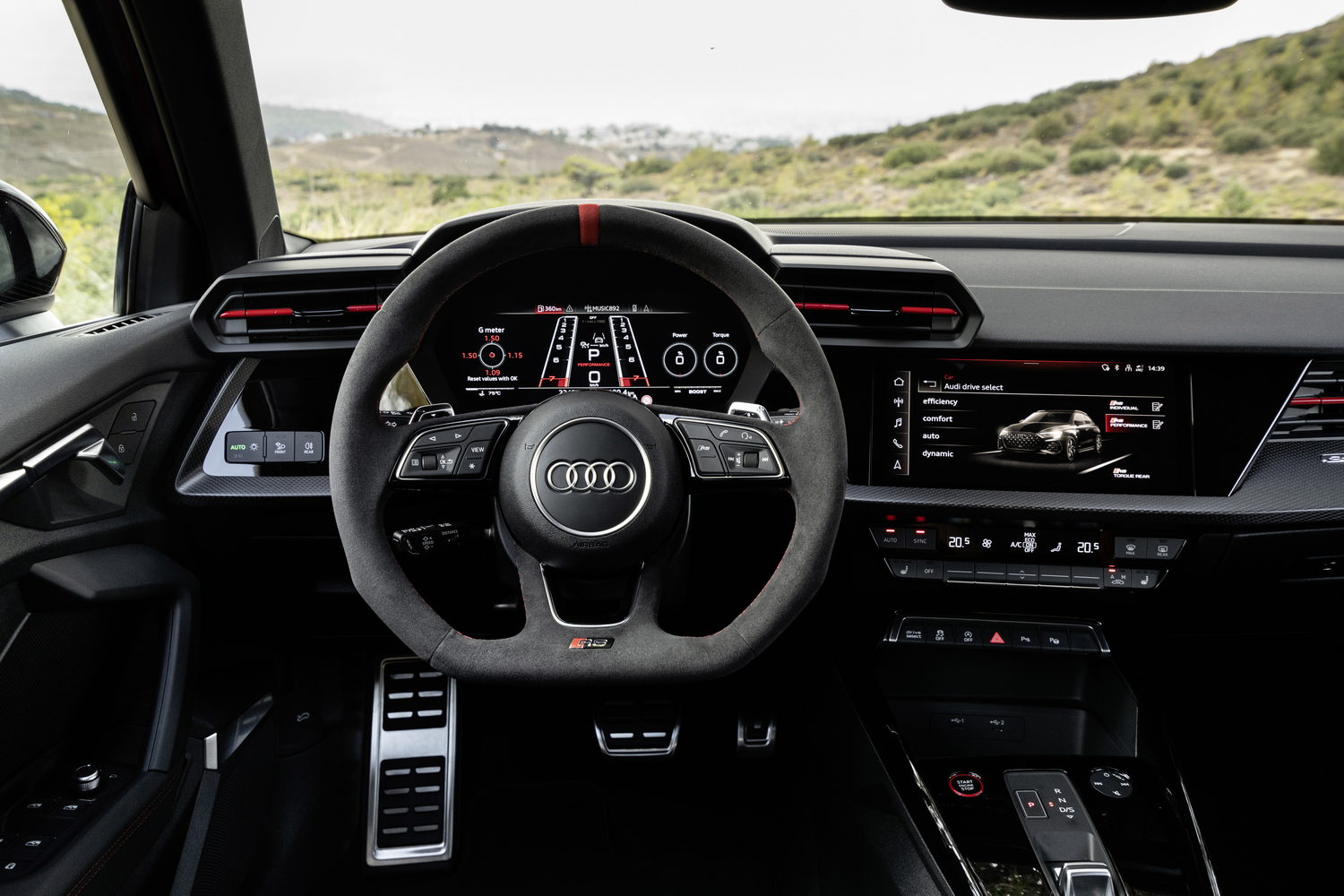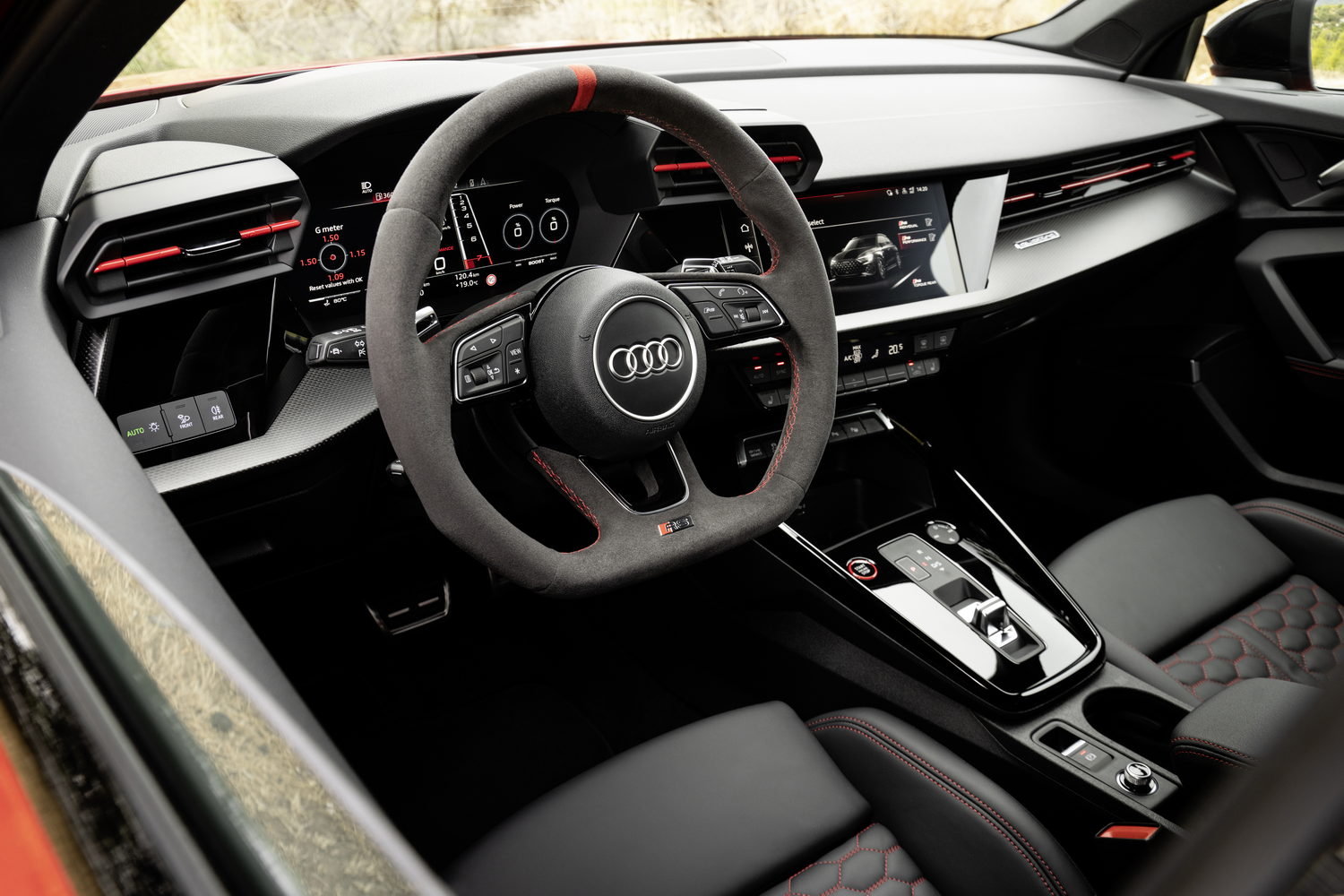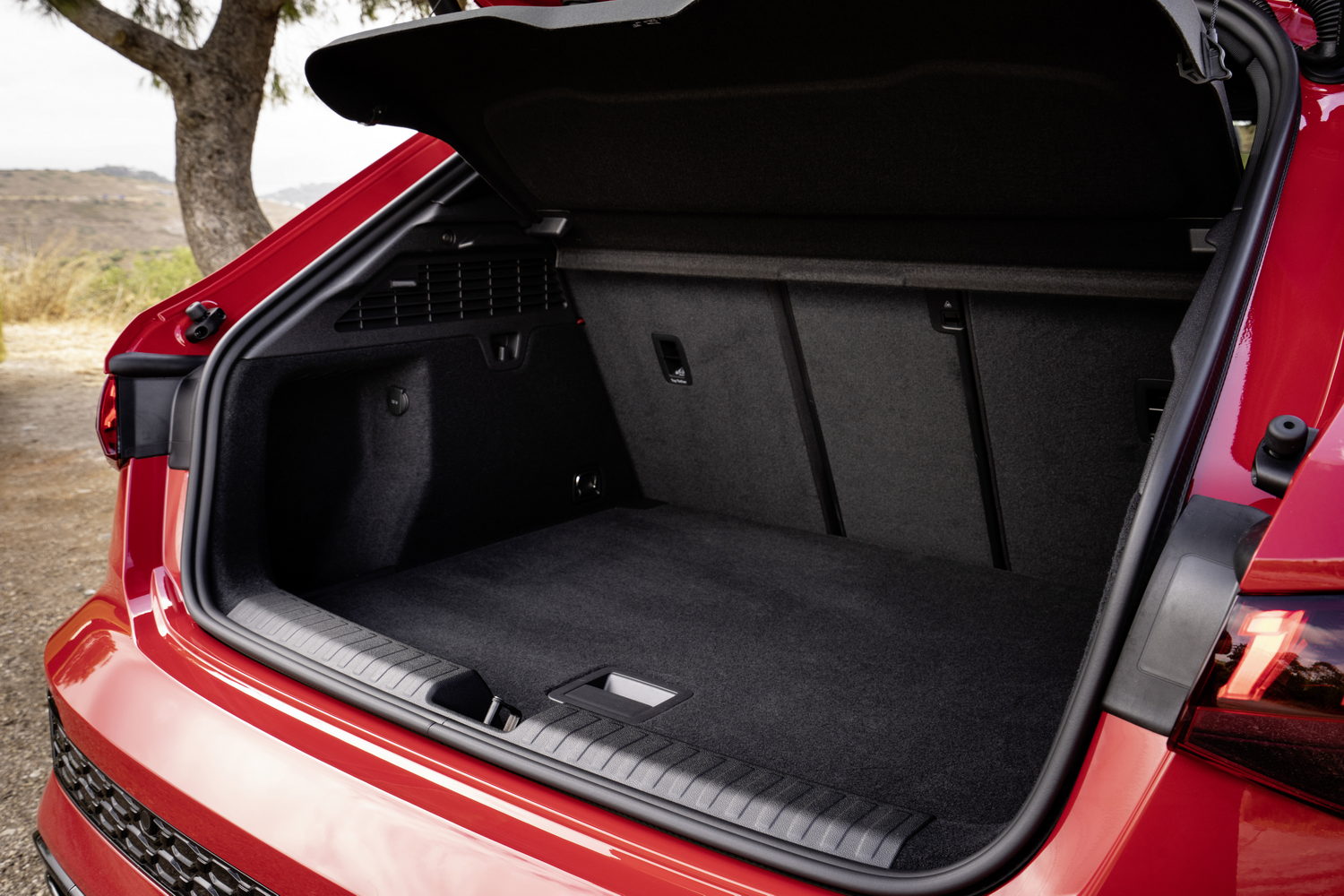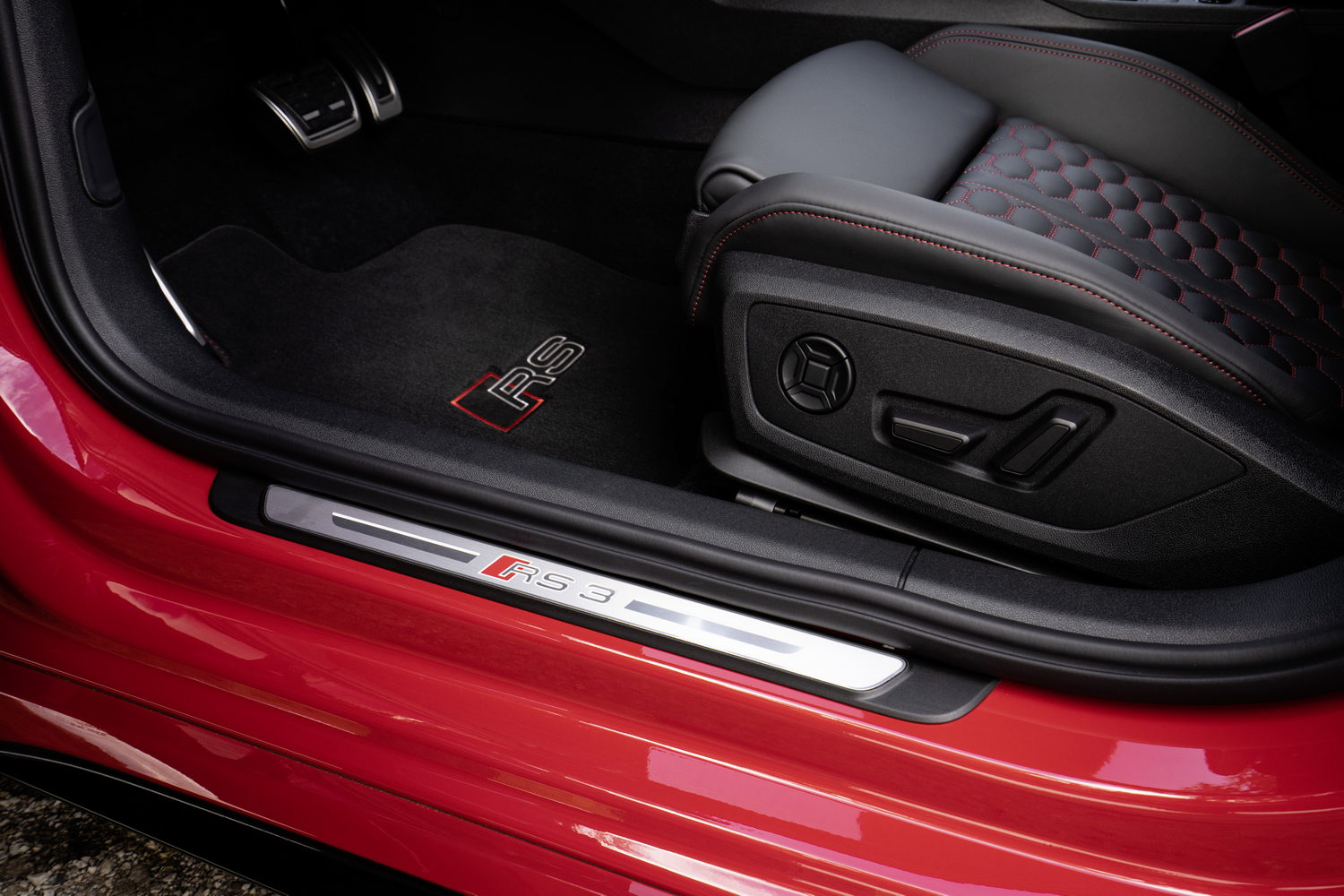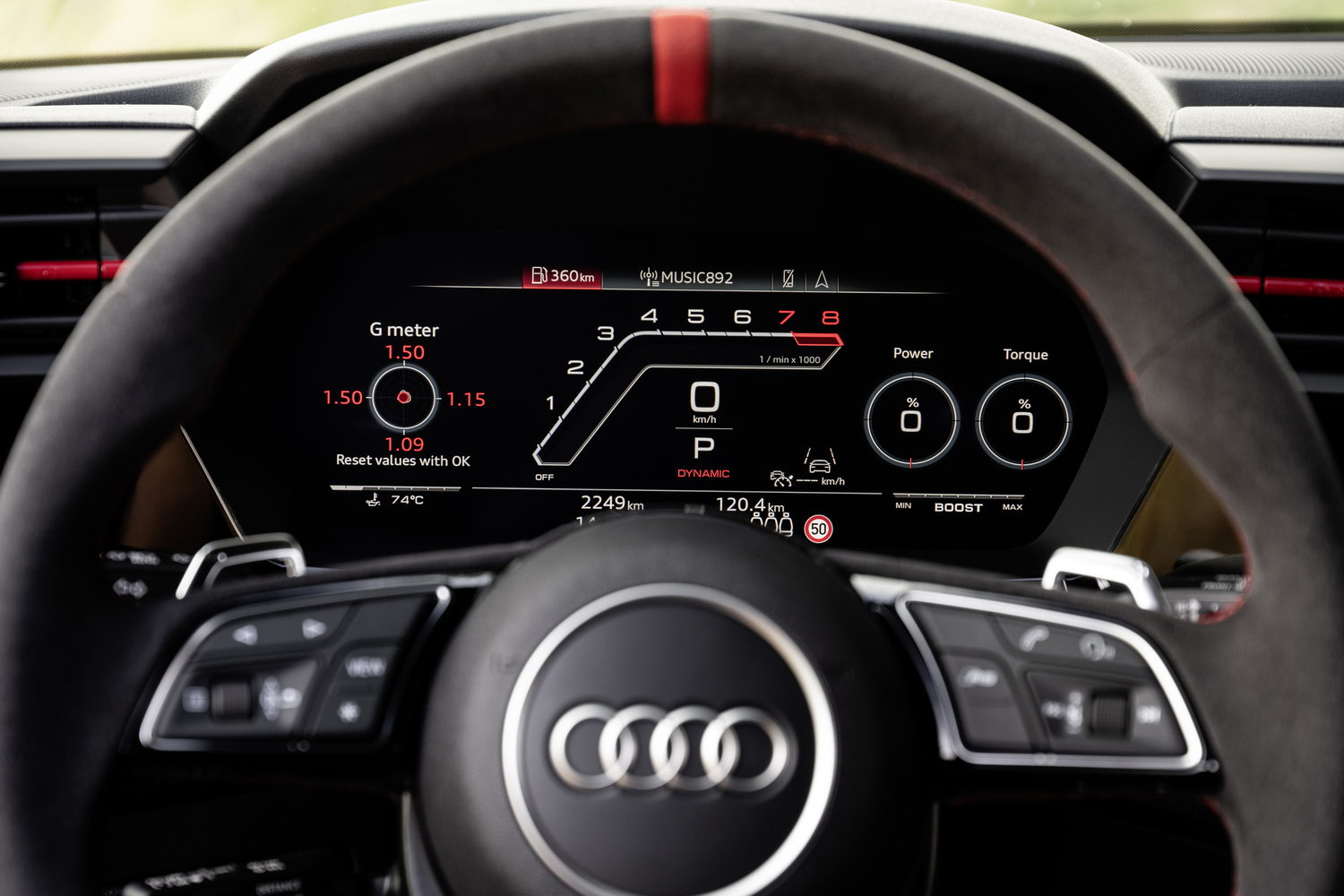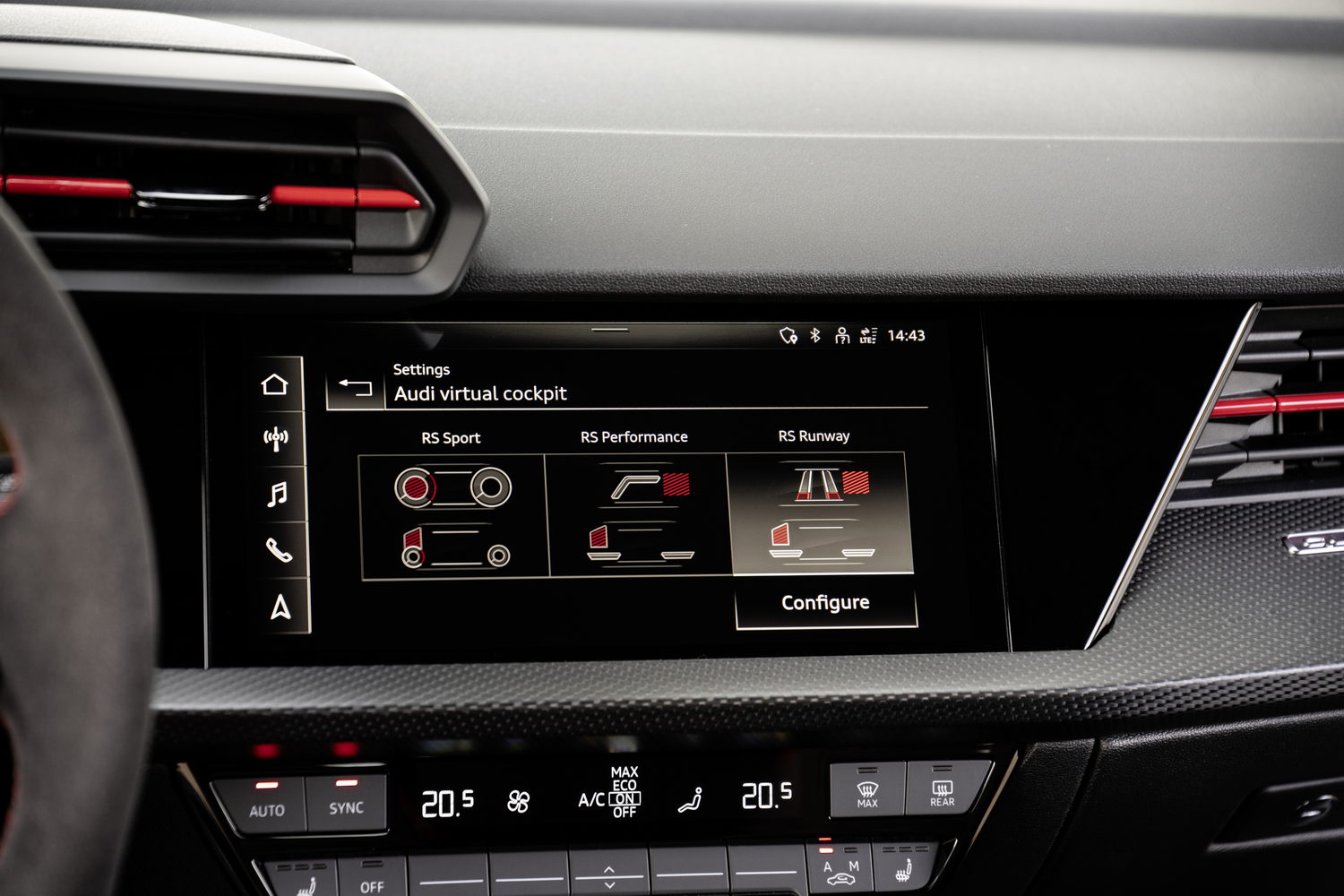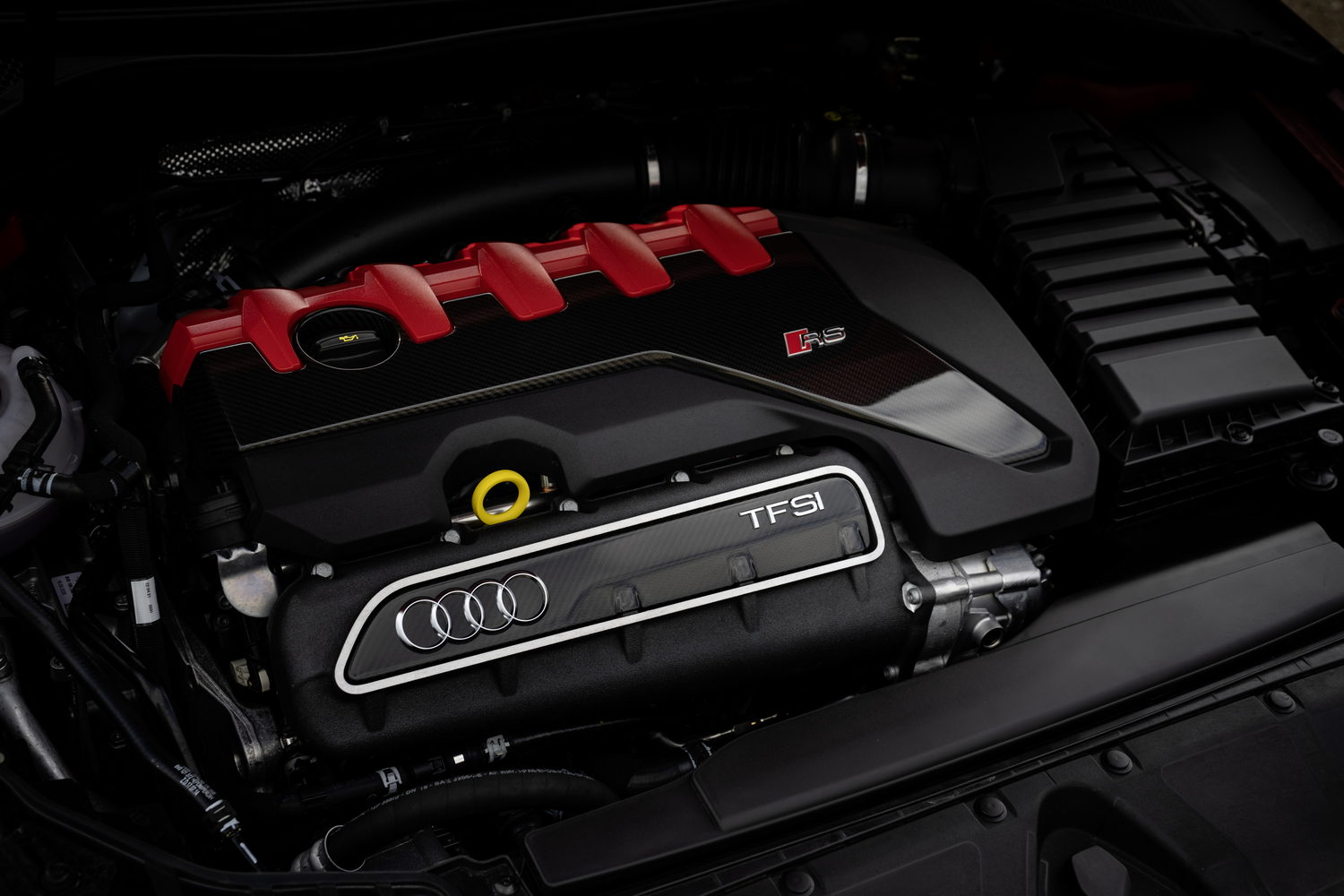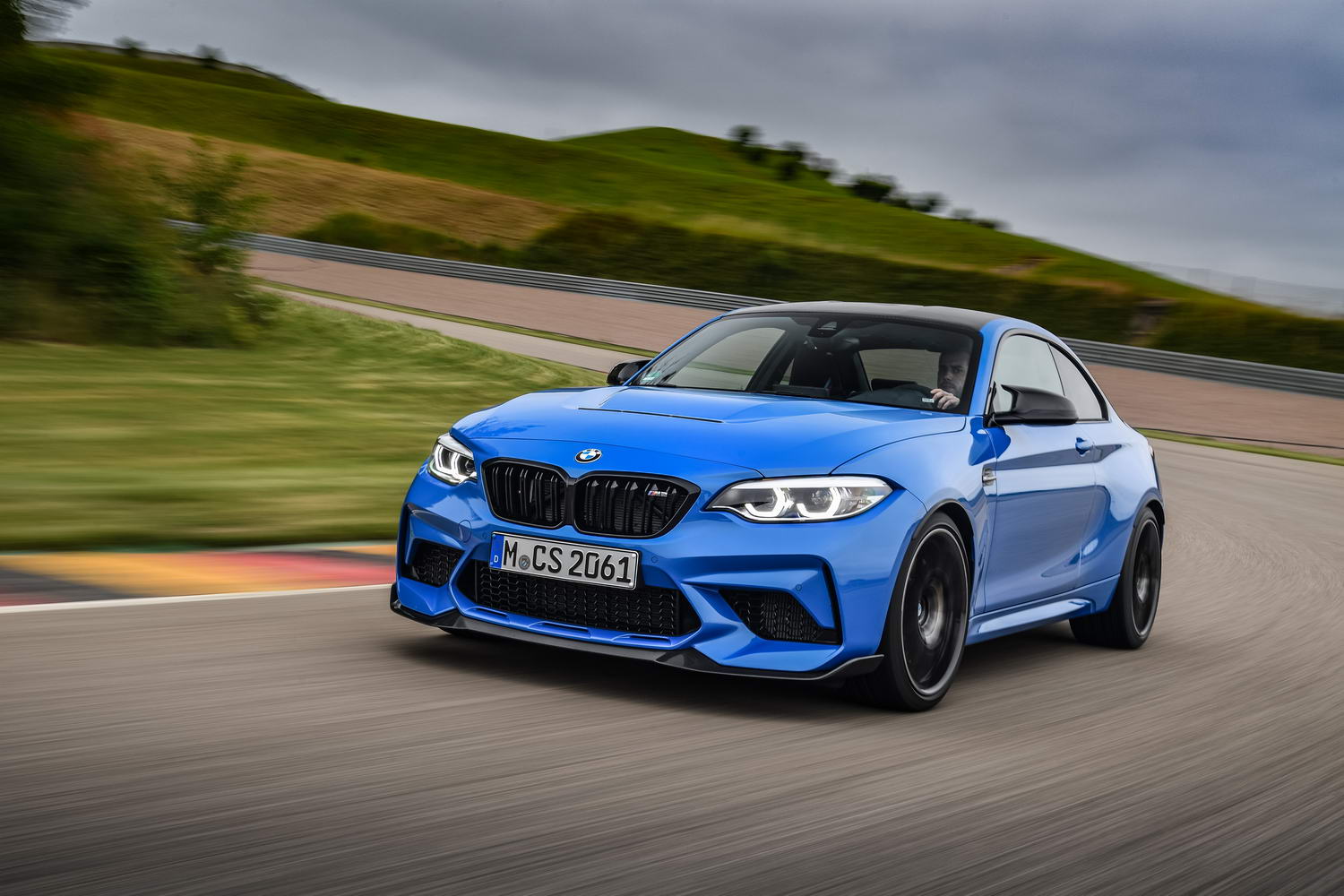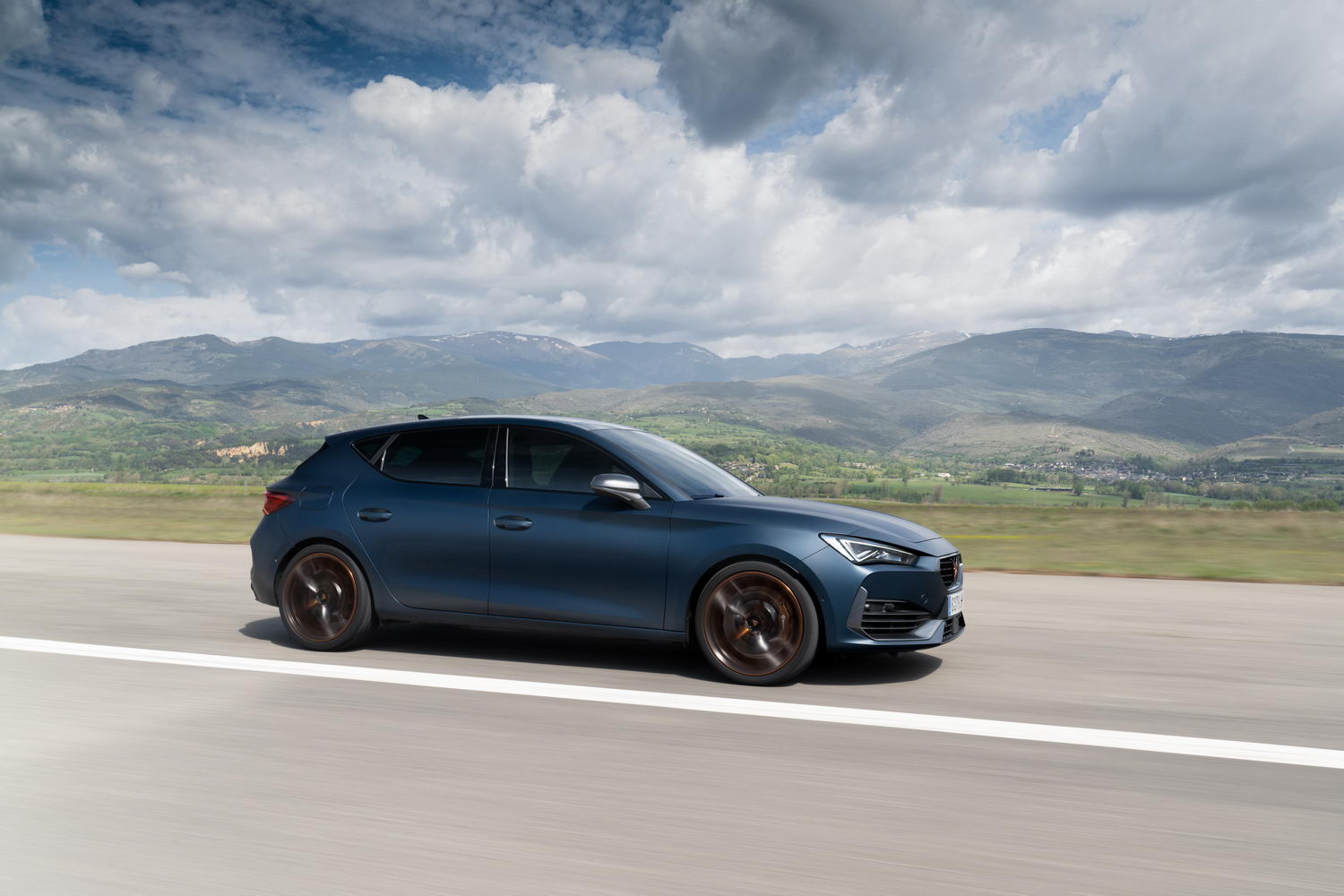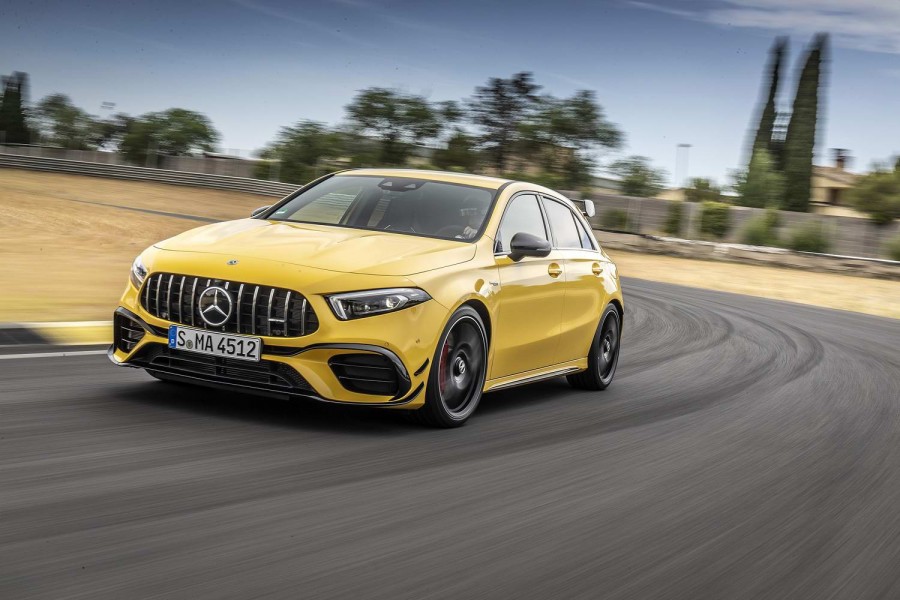The Audi RS 3 Sportback continues to push the envelope of what a hot hatch is capable of and the 2022 iteration is the most potent yet. Bold styling and Audi's phenomenal 2.5-litre five-cylinder engine are joined by a trick new RS torque splitter for added rear-wheel-drive goodness.
In the metal
Where the Audi S3 is only subtly more sporting in appearance than, say, an A3 S line, there's no mistaking the RS 3. It's as in your face as you'd expect a 400hp hatch to be, mostly because of its unique grille design. An enlarged honeycomb mesh in the main 'singleframe' grille and accompanying side intakes help to keep engine and brakes sufficiently cooled and the gloss black surround has SEAT Ibiza Bocanegra vibes to it.
Audi gives its latest pocket rocket a bespoke illumination signature that includes a 15-LED panel that, when the car is unlocked, plays an 'RS 3' and a chequered flag animation. It's borderline cringe, but Audi is a company that has long been using lighting as a key element of its exterior design.
The front wheel track is wider by 33mm and the rear by 10mm compared with the Audi S3 Sportback, while overall ride height is reduced by a further 10mm. The RS 3 sits 25mm lower than a standard A3. An RS-exclusive rocker panel along the sill with a black insert ties in with the black door mirrors and window surrounds.
A gloss black diffuser and honeycomb insert spans the rear bumper to not only differentiate the RS 3 but also to emphasise its width. Like its predecessor the new RS 3 has two sizeable exhaust outlets on either side of the diffuser, although these actually house two smaller outlets on each side.
Audi repeats the honeycomb pattern inside the car, as it is stitched into the central sections of the bolstered sports seats. These look good and prove to be supportive, too.
A redo of the 'virtual cockpit plus' 12.3-inch digital instrument display adds RS-specific readouts and drivers can have a raft of parameters on show, from a G-meter to blinking shift light indicator. When you aren't using the 10.1-inch touchscreen for your Apple CarPlay or Android Auto, you can view the coolant and gearbox oil temperatures or delve into the numerous setup options available.
Driving it
Considering the ever-tightening emissions regulations it is quite a surprise that Audi has managed to retain its legendary 2.5-litre turbocharged five-cylinder petrol engine and keep it free from electrification. Power output remains at 400hp while torque increases to 500Nm. The peak power output arrives 250rpm earlier than before, at 5,600rpm, and lasts until 7,000rpm - that torque is a constant force at your back as the speed builds, and the RS 3 does that at an astonishing rate.
From a standing start it sails past 100km/h in 3.8 seconds. For some context, that puts it in the same bracket as cars like the Lexus LFA, Ferrari F50 and the first-generation Audi R8 V10. The standard RS 3 is limited to 250km/h, but options such as the RS dynamics package plus lift that to 290km/h. Serious performance from a five-door hatch.
But there's more to the new RS 3 than outright straight-line pace, which is just as well given how little of that you can use on the public road. At the rear axle is a newly developed RS Torque Splitter that replaces the previous multi-disc clutch pack with an electronically controlled multi-disc clutch on each of the drive shafts. Through corners it can shift torque to the outside wheel to reduce understeer and enable the car to better rotate around the apex.
Over the twists, turns and undulations of the Greek roads of our test route this becomes apparent with the sensation of a faster turn-in and direction changes that feel to come more from the rear. Turn-in is also improved thanks to new pivot bearings that add one degree more negative camber, while the rear end gets a new stabiliser bar (designed to fit around the RS Torque Splitter) and has stiffer wheel carriers.
Optional adaptive dampers also play a big part in how the RS 3 drives and were fitted to our cars, so we can't comment on how it behaves compared to the standard setup. There is more comfort in the so-named mode while a switch to 'Dynamic' leaves you assured that its stiffer setting has been applied, making the car seem pointier and better-suited to a smooth track surface rather than more weathered roads.
But taking the Audi onto the track and selecting the RS Individual mode reveals an RS 3 that is more capable and playful than ever. With the adaptive dampers put to a slightly softer setting traction feels noticeably improved and the slight increase in body movement gives the driver a much greater sense of exactly how the car is behaving. It is outrageously quick for what it is and the manner in which all four wheels drag it out of one corner and slingshot you towards the next apex is every bit as addictive as the accompanying soundtrack. The steering feel - something that hasn't always been Audi's strong suit - is improved by a variable ratio setup that has more life to it than its predecessor and contributes to the RS 3's sense of agility on and off the racetrack.
If track driving is your thing, then the improved braking system will be a positive as it features 375mm discs up front and 310mm discs on the rear. New airflow control, Audi claims, improves brake cooling times by 20 per cent. In keeping with its supercar-baiting performance, Audi will even offer buyers 380mm ceramic brakes that shave 10kg in comparison to the steel items and can withstand higher temperatures.
In reality, most RS 3 buyers will keep their cars on the road in daily use and with the comfort of the adaptive dampers it is a hot hatch that delivers sufficient comfort and usability. Indeed, you need to keep an eye on that crisp instrument display, as there is enough sound insulation and suspension compliance to disguise the easily gained speed.
What you get for your money
The Audi RS 3 is as eye-wateringly expensive as it is quick, with a base price in Ireland of just over €84,000 - before you begin delving into the extensive list of options and configuration packs. It seems incredible that you could spec a hot hatch into six figures, but this is the world car enthusiasts now live in. Still, spending some time going through the configurator shows that it's easy to create an RS 3 that will most likely be very unique on the road.
Summary
It's hard to say for certain if this RS 3 will be the last hurrah for the spectacular five-cylinder engine, but we're very glad it still remains in a relatively pure form. Leaving aside the cost, the RS 3 Sportback is an extremely capable, phenomenally fast hatchback that redefines what you thought was quick for a hatchback. There is some very impressive technology and mechanical magic going on under the skin that will leave drivers feeling more confident without the sense that the car has done everything for you, too.

